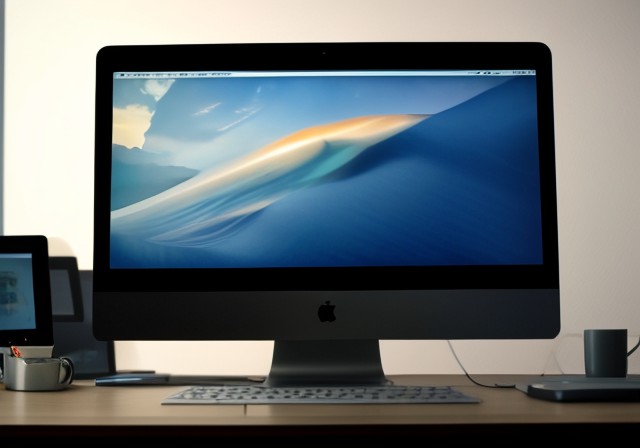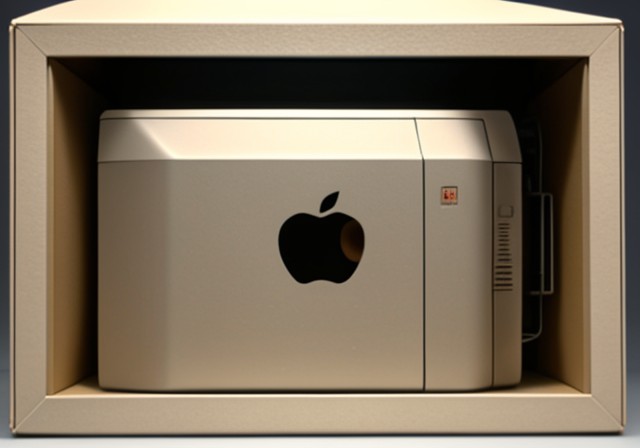(SKY-LAND) — There are a lot of motivations to despise midwinter, yet in addition in excess of a couple to cherish it.
It was on a January day like today — a long time back, today, to be definite — that the individualized computing world changed perpetually, because of the presentation of the Apple Mac.
The Macintosh, as it's presently known, was an ominous prologue to PC highlights we currently underestimate. Its screen is minuscule and without variety, yet a screen regardless, something beyond what you could say of the greater part of the typewriters that graced homes during the 1980s. Similarly, rather than a cumbersome pinnacle and, surprisingly, bulkier screen, the Mac's all's parts are contained in a solitary nook. It's a squarish, beige nook that is everything except smooth, however it's the herald of the present most smart and conspicuous across the board PC, the iMac.
Following its 1984 presentation, the Mac wound up consigned to a minuscule corner of the individualized computing business sector, and Apple almost left business almost 10 years after its presentation. In any case, its quintessence persevered. In the present cell phone filled world, the cumbersome work area tower PC is consigned to gaming caves and workplaces, and the most thrilling and imaginative PCs that aren't PCs take motivation from the across the board plan of the Mac.
So we can imagine no better method for praising its 40th commemoration than by contrasting both Apple symbols — the beige box from 1984 and its far off relative, the 24-inch iMac. This is a PCMag custom; we've done comparative examinations for the Mac's 30th and 35th commemorations. On the off chance that you believe it shares nothing practically speaking with its replacements other than a piece of natural product, you'll be shocked.
A Renaissance Machine
The Mac was the epitome of Apple's "Think Unique" showcasing motto. For quite a long time previously, PCs were lumbering and costly. From the room-filling centralized servers of the 1960s to the order line connection points of trials like the Altair 8800 and Apple I, minimal about processing leant itself to a huge presence in the existences of normal buyers.
The Apple Mac (later renamed the Mac 128K) was unique. (What might be compared to about $7,510 today), you could get a whole PC in a solitary 13.5-by-9.7-by-10.9-inch bundle to put right in front of you. Connecting a console and a little handheld gadget to control the on-screen cursor — called a mouse — occupied somewhat more space. However, even the peripherals were astutely planned. The console has no number cushion to save space, a plan that itself is presently normal, as number cushion less gaming consoles.
The Mac's mouse wasn't the main PC pointing gadget, however it enhanced existing plans by discarding the second button for straightforwardness and covering the steel following ball in elastic to ease rolling.
The mouse, console, and the actual Mac are clad in beige, with a little brilliant Apple logo situated in the lower-right corner of the PC case. Over the logo, the 9-inch highly contrasting CRT show has a goal of 512 by 342 pixels, very low contrasted and the 1,920-by-1,080 pixels that are normal on HD presentations of the present PC screens. Be that as it may, essentially the Mac has a manual brilliance control handle.
Underneath the showcase, you'll see a 3.5-inch floppy plate drive incorporated into the case. It's a curiosity contrasted and the 5.5-inch plate size that was ordinary in the mid 1980s. You could likewise purchase an outer auxiliary plate drive (for $495), which adds the capacity to utilize different circles for putting away reports and projects.
Around back, you'll track down two sequential ports for associating printers, modems, and such. Implicit ports were nothing to joke about in 1984, when different computers expected exceptional include cards to have the option to associate with peripherals. Utilizing a modem and AppleTalk, you might really interface with a nearby organization of other Mac PCs.
Inside, the Mac is pressing a few genuinely great parts, essentially contrasted and what else was accessible in 1984 (not much). The Motorola 68000 was the best in class microchip, offering a pinnacle speed of 8Mhz. Far superior, it can run 32-cycle programming, an immense improvement over the 16-bit programs that went before it. The 32-bit standard would live on for over 20 years, until the ongoing 64-digit engineering supplanted it in the last part of the 2000s.
The Motorola 68000 joins 64KB of ROM and 128KB of Slam. Outstandingly, the Mac's memory isn't supplemented with a capacity gadget. Anything you were doing must be saved to a floppy circle prior to closing down the PC. For some projects, you'd really need to eliminate the program plate and supplement one more circle each time you needed to save your work, making that additional plate drive look like an easy decision. Basically there is a different chip and memory to keep the Mac's clock and schedule precise when it's switched off.
Macintoshes of today are known for their noteworthy set-up of packaged programming, something the first Mac has, as well. The MacPaint program allows you to utilize the cursor and a range of varieties and virtual devices to make craftsmanship, and you might utilize the fix order to switch botches. For journalists, there's the MacWrite program, an early word processor that benefits significantly from the Mac's GUI. Rather than utilizing the console to explore through a record, you can basically point, feature, and snap on words.
After 40 years
Quick forward 40 years, and the most recent Apple iMac shows exactly the way that far individualized computing has advanced. In practically every regard, the 24-inch iMac is superior to its Mac predecessor. Gone is the beige plastic case, with a smooth, for the most part glass nook having its spot, accessible in your decision of sweet tones: blue, green, pink, or a more downplayed silver. Indeed, even the jawline underneath the screen is shrouded in similar sheet of glass as the iMac's showcase and its bezels, allowing the framework's mark to variety radiate through.
The iMac's screen estimates 23.5 corner to corner inches, contrasted and only 9 crawls for the Mac's presentation. With a goal of 4,480 by 2,520 pixels and covering 100 percent of the sRGB variety range, the iMac's presentation is light years denser and more beautiful, as well.
Notwithstanding the 24-inch iMac's huge size contrasted and the Mac, it weighs even less — 9.75 pounds versus 16.5 pounds.
Like the principal Mac, the iMac additionally has back input/yield ports, yet you won't track down any outdated, cumbersome chronic connectors. All things considered, the iMac highlights two (or four, assuming that you pay extra) USB4 Type-C ports with Thunderclap support, and an Ethernet jack. You'll find not so much as an earphone jack or a SD card space, not to mention a floppy drive. You can't plug earphones into the first Mac, however essentially it has a connector on the facade of the case for interfacing the console and mouse.
Then again, you don't actually have to plug anything into the iMac to utilize it, on account of Bluetooth. The iMac's packaged console and mouse are remote and accompanied worked in battery-powered batteries.
Inside the 24-Inch iMac, there's an Apple Silicon processor with different centers that offers amazing pace contrasted and the Motorola 6800. Furthermore, in addition to the fact that the iMac accompanies 8GB of memory (an astounding 4,000,000% expansion over the Mac), yet it likewise accompanies something the Mac levels has in no limit: a drive that stores your information in any event, when the PC is off.
Nearly everything is improved with the iMac's product contributions, too. Word handling is covered thanks to Pages, and you likewise get a calculation sheet proofreader (Numbers) and a photograph coordinator (Photographs). One glaring nonappearance is anything looking like MacPaint; you'll require outsider programming to draw except if you open a prior picture in the See application.
A Trailblazer in Evaluating, As well
The one unequivocal benefit the first Mac has over the ongoing Apple across the board arrangement is cost. You can get a modest across the board Windows PC these days for considerably less than $1,000, contrasted and the iMac's $1,299 beginning cost. Despite the fact that the Mac is costly in outright terms (both in 1984 bucks and the present dollars), it was as yet an astonishing arrangement for now is the ideal time. No other organization offered an across the board PC with an easy to understand graphical point of interaction for around $2,000.
You could obviously head back home with a Commodore 64 for considerably less ($300 in 1984, or $903 today), however the experience of utilizing it was undeniably more lumbering since it didn't have a GUI. There was likewise the Apple Lisa, which looks like the Mac's across the board structure factor, yet was undeniably more costly.
In the event that you're hoping to get away from the colder time of year blues by going overboard on a showy tech item, purchasing the present iMac will unequivocally possess all the necessary qualities better than the Mac accomplished for the typical buyer in 1984. Yet, it brought simple to-involve processing in a conservative bundle at a cost that, while high, was still a reasonable plan. It's hard not to think back on it affectionately, regardless of whether the Macintosh work areas of today are a large number of times all the more remarkable.


Comments
Post a Comment